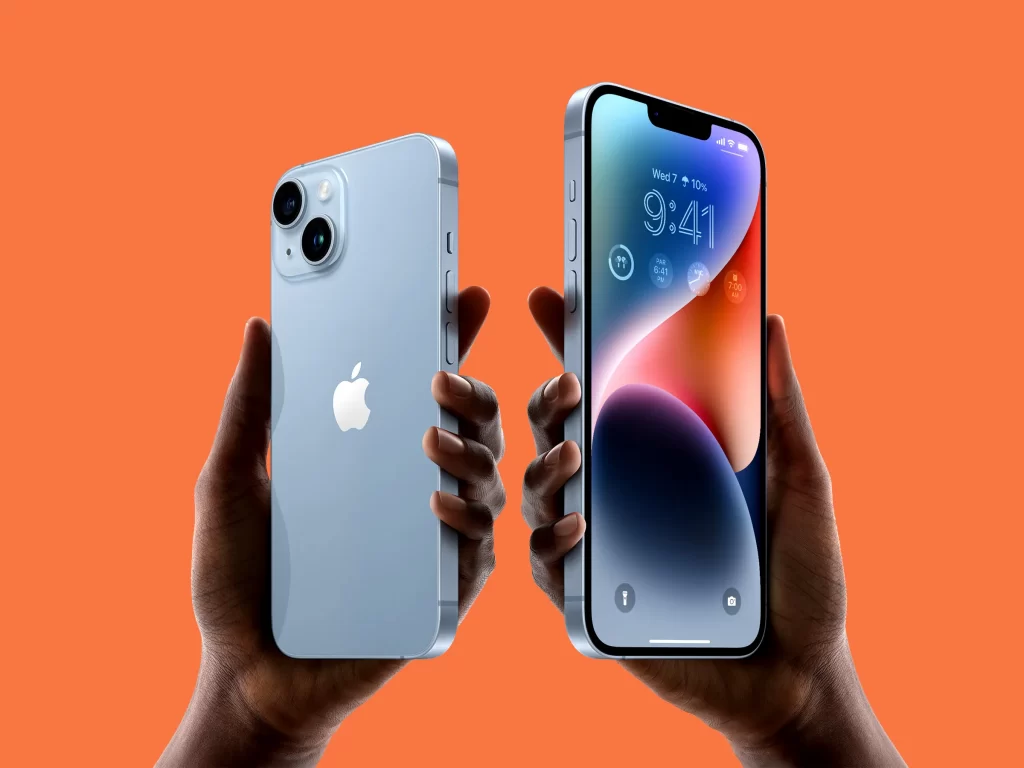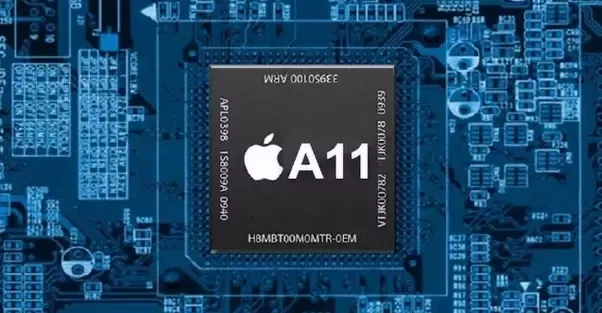Triplet important information in iPhone (1)
I can tell you more about the CPU and complex IC in iPhones.
The CPU (Central Processing Unit) is the primary processor of the iPhone and is responsible for executing most of the device’s instructions. It is a small, powerful chip designed to perform complex calculations quickly and efficiently. The CPU is typically located near the top of the logic board and is usually covered by a metal shield to protect it from damage.
The complex IC (Integrated Circuit) is a small electronic component responsible for storing and retrieving data on the iPhone. It is also known as the NAND flash memory and is an essential element in the iPhone’s storage system. The complex IC is typically located at the bottom of the logic board and covered by a metal shield.
The CPU and the complex IC are critical components of the iPhone, and any damage can cause the device to malfunction. In the event of a hardware failure, it may be necessary to replace the logic board or the affected component to restore the functionality of the iPhone.

What are some common signs of hardware failure in an iPhone?
There are several common signs of hardware failure in an iPhone, including:
1. The screen becomes unresponsive or has dead pixels
2. The iPhone won’t turn on or boot up
3. The battery drains quickly or won’t hold a charge
4. The iPhone overheats or becomes excessively hot to the touch
5. The iPhone randomly shuts down or restarts
6. The iPhone cannot connect to Wi-Fi or cellular networks
7. The iPhone’s sound system stops working or produces distorted audio
8. The iPhone’s camera doesn’t function properly or produces blurry images
9. The iPhone’s buttons or switches become unresponsive or stuck
10. The iPhone’s touch ID or face ID stops working.
If you experience any of these issues with your iPhone could be a sign of a hardware failure. In such cases, taking your iPhone to an authorized repair center or an Apple Store is recommended to have it examined by a 12. technician.
What are some ways to prevent hardware failure in an iPhone?
There are several ways to prevent hardware failure in an iPhone, including:
Use a protective case: A protective case can help prevent physical damage to your iPhone from accidental drops or impacts.
Keep your iPhone away from extreme temperatures: Avoid exposing it to extreme heat or cold, which can damage its components.
Avoid exposing your iPhone to moisture: Keep it away from water and other liquids, as exposure to smoke can damage its internal components.
Don’t overload your iPhone: Avoid downloading too many large files or apps that can consume a lot of storage space and slow down your iPhone.
Keep your iPhone up-to-date: Regularly update your software to ensure it has the latest security patches and bug fixes.
Avoid using non-certified chargers: Use only Apple-certified chargers and cables to charge your iPhone, as non-certified chargers can damage its battery and other components.
Please avoid using your iPhone while it’s charging: Using it while it’s charging can cause it to overheat, damaging its internal components.
By following these tips, you can help extend the lifespan of your iPhone and prevent hardware failure. However, it’s important to note that even with proper care, hardware failure can still occur in some cases, so it’s always a good idea to back up your data regularly to avoid data loss.
What are some signs that my iPhone is about to fail?
There are several signs that your iPhone may be about to fail, including:
- Frequent crashes or freezes: If your iPhone frequently crashes or freezes, it could be a sign of a hardware or software issue.
- Slow performance: If your iPhone is slow to respond or takes a long time to open apps or perform tasks, it could be a sign that the device is struggling with performance.
- Battery life issues: If your iPhone’s battery drains quickly or won’t hold a charge, it could be a sign that the battery is deteriorating and may need to be replaced.
- Overheating: If your iPhone becomes excessively hot to the touch, it could be a sign of a hardware issue, such as a failing battery or damaged internal components.
- Screen issues: If the screen of your iPhone becomes unresponsive, has dead pixels, or shows discoloration or distortion, it could be a sign of a hardware issue.
- Connectivity problems: If your iPhone has difficulty connecting to Wi-Fi or cellular networks, it could indicate a hardware or software issue.
If you are experiencing any of these issues with your iPhone, addressing them immediately is essential to prevent further damage or data loss. You may want to take your iPhone to an authorized repair center or an Apple Store to have it examined by a technician. They can run diagnostics to determine the root cause of the problem and suggest the appropriate course of action.
What are some steps I can take to prevent my iPhone from overheating?
There are several steps you can take to prevent your iPhone from overheating:
Keep your iPhone out of direct sunlight and away from heat sources: Avoid exposing it to direct sunlight or placing it near heat sources, such as radiators or ovens.
Remove your iPhone from its case: If you are using a protective case, remove it to allow your iPhone to cool down more quickly.
Close background apps: Close any apps you are not currently using, as they can consume processing power and cause your iPhone to overheat.
Turn off unused features: Turn off features such as Bluetooth, Wi-Fi, and location services when you’re not using them, as they can also cause your iPhone to overheat.

Update your iPhone’s software: Make sure it is up-to-date with the latest updates, as they often include bug fixes and performance improvements that can help prevent overheating.
Please avoid using your iPhone while charging: It can cause it to overheat, so it’s best to avoid doing so.
Use Apple-certified accessories: Use only Apple-certified chargers and cables to charge your iPhone, as non-certified additions can cause your iPhone to overheat.
By following these steps, you can help prevent your iPhone from overheating. However, suppose your iPhone continues to overheat despite taking these measures. In that case, it may be a sign of a hardware issue, and you may need to take it to an authorized repair center or an Apple Store to have it examined by a technician.
What are some signs that my iPhone has a hardware issue?
There are several signs that your iPhone may have a hardware issue, including:
- 1. Your iPhone won’t turn on or boot up.
2. The screen becomes unresponsive or has dead pixels.
3. The iPhone’s sound system stops working or produces distorted audio.
4. The iPhone randomly shuts down or restarts.
5. The iPhone cannot connect to Wi-Fi or cellular networks.
6. The iPhone’s camera doesn’t function properly or produces blurry images. -
7. The iPhone’s buttons or switches become unresponsive or stuck.
- 8. The iPhone’s touch ID or face ID stops working.
9. The battery drains quickly or won’t hold a charge.
10. The iPhone overheats or becomes excessively hot to the touch.
11. If you experience any of these issues with your iPhone, it could be a sign of a hardware issue. In such cases, taking your iPhone to an authorized repair center or an Apple Store is recommended to have it examined by 12. a technician. They can run diagnostics to determine the root cause of the problem and suggest the appropriate course of action, which may involve repairing or replacing the affected component.
Is there anything else I should know about this topic?
Here are a few more things you may want to know about hardware issues in iPhones:
Various factors, including physical damage, component wear and tear, and manufacturing defects, can cause hardware issues.
Some hardware issues may be covered by Apple’s warranty or an extended warranty, while others may require out-of-pocket repairs.
Attempting to repair an iPhone yourself or taking it to an unauthorized repair shop can void your warranty and may cause further damage to the device.
It’s always a good idea to back up your data regularly to avoid data loss in a hardware failure.
Prevention is vital when it comes to hardware issues in iPhones. By taking good care of your device and following best practices, you can help prevent hardware failures and prolong the lifespan of your iPhone.
I hope this information is helpful. If you have any other questions, please let me know.
A step beyond the content: What should I do if I can’t remember my Apple ID password?
If you can’t remember your Apple ID password, there are several steps you can take to reset it and regain access to your account:
- Use the Apple ID website: Go to the Apple ID website (appleid.apple.com) and click “Forgot Apple ID or password.” Follow the on-screen prompts to reset your password.
- Use your iPhone: If you have an iPhone running iOS 10.3 or later, you can reset your password using the Settings app. Go to “Settings” > “[Your Name]” > “Password & Security” > “Change Password”. Follow the on-screen prompts to reset your password.
- Contact Apple Support: If you cannot reset your password, contact Apple Support for further assistance. You may be asked to provide personal information to verify your identity before your password can be reset.
It’s essential to keep your Apple ID password secure and to use a strong and unique password that is not easily guessable. This can help prevent unauthorized access to your account and protect your personal and sensitive data. If you have trouble remembering your password, consider using a password manager to store and manage your passwords securely.












